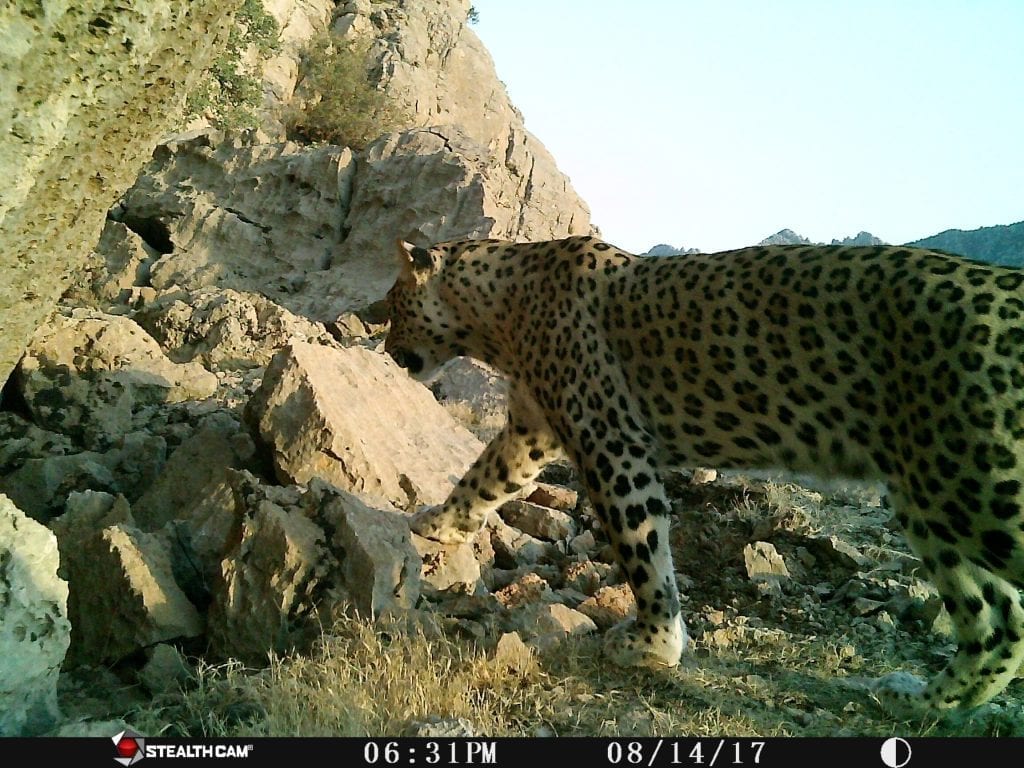Policy brief: tackling policy dilemmas for wetland restoration
08 December, 2025
Thursday 03 september 2020
Header photo: Camera trap image of a Persian leopard in the Qara Dagh nature reserve © Nature Iraq
Qara Dagh is famous for many things, but until recently, nature conservation was not one of them. The local nature conservation NGO Nature Iraq listed Qara Dagh as a Key Biodiversity Area (KBA) and is responsible for the establishment and management of the reserve.
When Nature Iraq started working in the area in 2007, the Persian Leopard was thought to be extinct in the region as the latest encounter dated back to 1980. Hoogeslag: ‘In 2011, when the first camera trap footage was analysed, the Persian leopard revealed itself.’
‘The Persian Leopard was thought to be extinct in the region’
The presence of the Persian Leopard in Qara Dagh means more than just a conservation flagship and motive. The Kurdish people from this region relate to the leopard because of their history of strive and struggle that resembles that of the leopard. A famous Kurdish saying goes: ‘We have no friends but the mountains.’
For the Persian leopard, and its preys, hunting remains a serious threat. The mountains provide some safety, especially with the establishment of the small protected area in Qara Dagh.
Almost as rare as their flagship species is the legal framework that allowed for the establishment of the Qara Dagh Nature Reserve. ‘Nature Iraq managed to consolidate an agreement with the Kurdistan Regional Government through a partnership with its Environmental Protection and Improvement Board that recognised Qara Dagh as the first formally protected area of Kurdistan,’ Hoogeslag explains.
With the land acquisition fund, IUCN NL was able to support Nature Iraq to establish the reserve. Hoogeslag: ‘Instead of providing financial support for land purchase, which was not applicable as the land titles were not for sale, IUCN NL provided funds for urgent management activities, equipment, staff salaries and the construction of a sustainable eco-lodge.’
The Qara Dagh Nature Reserve covers nearly 2,300 hectares and comprises multiple ecosystems. The area has close to a thousand plant species, over 180 different recorded bird species and through their camera trap monitoring, Nature Iraq was able to identify 15 different mammal species.

‘Over the years, multiple leopards were trapped on camera and estimates state that between 5-10 Persian leopards now use the Qara Dagh nature reserve,’ says Hoogeslag. For the years to come, Nature Iraq aims to extend the protected area in Qara Dagh, covering more land to create a larger habitat were the Persian leopard can thrive once again.
‘Between 5-10 Persian leopards now use the Qara Dagh nature reserve’
Since its recognition as a protected area, the project’s results have exceeded expectations with the amount of local and international support it received. Hana Raza of Nature Iraq says: ‘The project’s results show that with incredibly limited personnel and resources, the project has made tremendous strides for the biodiversity in the region.’
Nature Iraq has finalised their sustainable eco-lodge, which is part of their wider sustainable ecotourism plan so that the beauty of the Kurdistan region can be promoted and shared with visitors. They extended their patrolling capacity by opening another ranger station, located centrally in the reserve so that their rangers can effectively control illegal hunting.
Since 2001, with its land acquisition fund, IUCN NL provides funds for local NGOs, like Nature Iraq, to acquire threatened patches of wilderness to protect and connect the – often fragmented – habitats of endangered species. The land acquisition fund is made possible through the generous support of the Dutch Postcode Lottery.